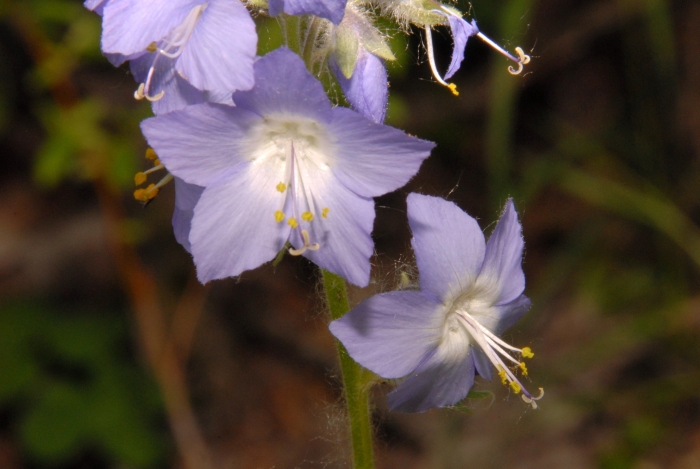Jacob’s Ladder
(Polemonium villosum)
Jacob’s Ladder (Polemonium villosum)
/
/

Brian Finzel
CC BY-SA 4.0
Image By:
Brian Finzel
Recorded By:
Copyright:
CC BY-SA 4.0
Copyright Notice:
Photo by: Brian Finzel | License Type: CC BY-SA 4.0 | License URL: http://creativecommons.org/licenses/by-sa/4.0/ | Rights Holder: Brian Finzel | Publisher: iNaturalist | Date Created: 2007-07-14T17:23:34-07:00 |















Estimated Native Range
Summary
Polemonium villosum, commonly known as Jacob’s Ladder or Greek Valerian, is a herbaceous perennial native to cool, temperate regions of Europe and Asia and the Subarctic. It is typically found in damp grasslands, meadows, woodland clearings, and along stream banks. The plant has a moderate growth rate and reaches a height of 0.8-1.5 feet (0.24-0.5 meters) with a spread of 0.5-1 feet (0.2-0.3 meters). Jacob’s Ladder forms clumps of pinnate leaves with leaflets resembling the rungs of a ladder, hence the common name. It produces clusters of bell-shaped, blue or white flowers that are quite showy and bloom in late spring to early summer.
Jacob’s Ladder is valued for its attractive foliage and delicate flowers, which make it a popular choice for cottage gardens, woodland plantings, and shaded borders. It is also used in informal pollinator gardens due to its appeal to bees and butterflies. The plant prefers consistently moist, well-drained soil, and can tolerate a range of soil types from loam to clay. While it thrives in full sun to part shade, in hotter climates, it benefits from afternoon shade to prevent wilting. It is generally low maintenance but can be susceptible to powdery mildew and rust, especially in humid conditions. Deadheading spent flowers can encourage a second bloom and prevent self-seeding, which can be prolific under ideal conditions.CC BY-SA 4.0
Jacob’s Ladder is valued for its attractive foliage and delicate flowers, which make it a popular choice for cottage gardens, woodland plantings, and shaded borders. It is also used in informal pollinator gardens due to its appeal to bees and butterflies. The plant prefers consistently moist, well-drained soil, and can tolerate a range of soil types from loam to clay. While it thrives in full sun to part shade, in hotter climates, it benefits from afternoon shade to prevent wilting. It is generally low maintenance but can be susceptible to powdery mildew and rust, especially in humid conditions. Deadheading spent flowers can encourage a second bloom and prevent self-seeding, which can be prolific under ideal conditions.CC BY-SA 4.0
Plant Description
- Plant Type:
- Height: 0.8-1.5 feet
- Width: 0.5-1 feet
- Growth Rate: Moderate
- Flower Color: Blue, Purple
- Flowering Season: Summer
- Leaf Retention: Deciduous
Growth Requirements
- Sun: Full Sun, Part Shade
- Water: Medium
- Drainage: Fast, Medium
Common Uses
Bee Garden, Butterfly Garden, Low Maintenance, Rock Garden
Natural Habitat
Damp grasslands, meadows, woodland clearings, and along stream banks in cool, temperate regions of Europe and Asia
Other Names
Common Names: Hairy Jacob’s Ladder , Tall Jacob’s-Ladder , Sky Pilot
Scientific Names: Polemonium villosum , Polemonium acutiflorum , Polemonium acutiflorum f. lacteum , Polemonium acutiflorum subsp. diminutum , Polemonium caeruleum subsp. racemosum , Polemonium caeruleum subsp. villosum , Polemonium caeruleum var. acutiflorum , Polemonium caeruleum var. lofoticum , Polemonium caeruleum var. racemosum , Polemonium caeruleum var. subalpinum
GBIF Accepted Name: